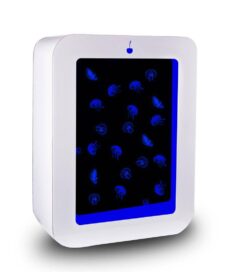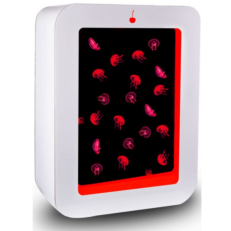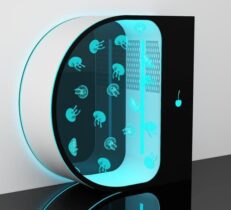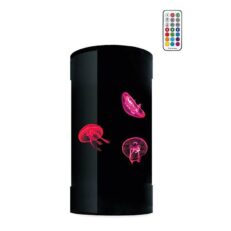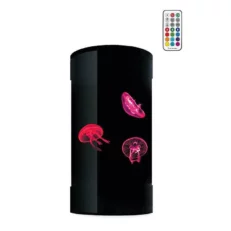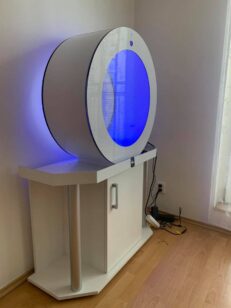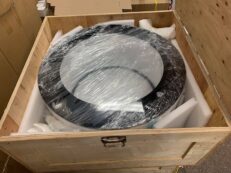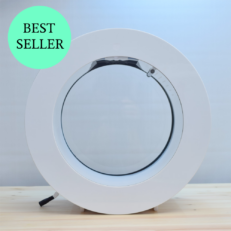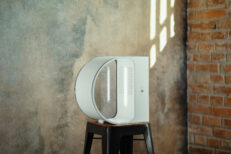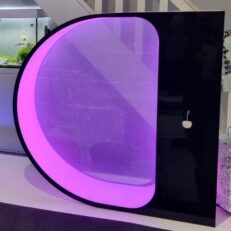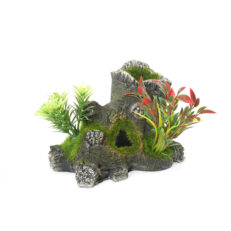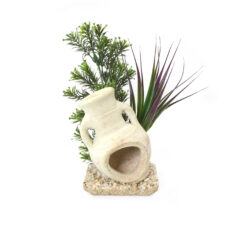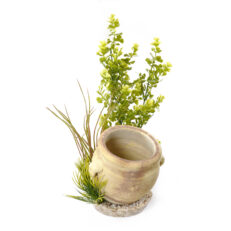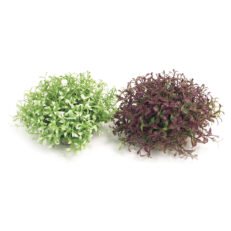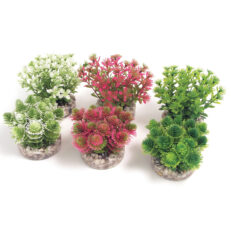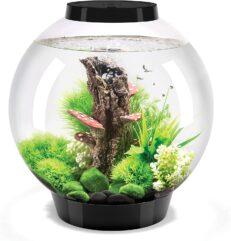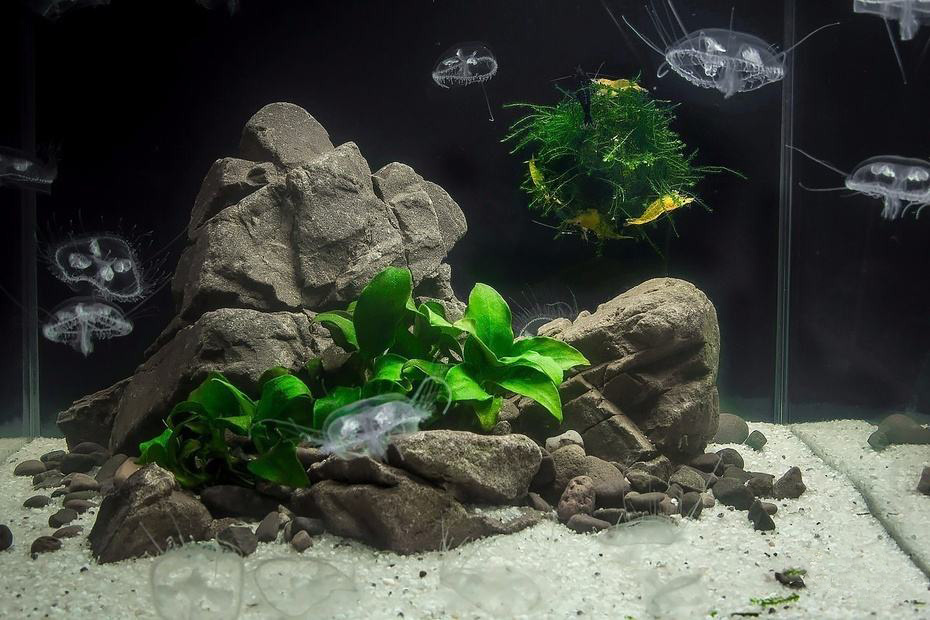
The significance of water flow in jellyfish tanks cannot be overstated, especially considering the unique requirements of these mesmerizing creatures. Unlike typical fish, jellyfish depend heavily on the movement of water within their habitat for their survival and well-being. This introduction aims to shed light on the crucial role that water flow plays in maintaining a healthy jellyfish tank.
Water flow in a jellyfish tank is essential for several reasons. Firstly, it facilitates the movement of jellyfish, enabling them to swim and feed effectively. Jellyfish are not strong swimmers; they rely on the currents within their environment to help them navigate and access food. A properly designed water flow mimics the natural ocean currents that jellyfish are accustomed to, providing a familiar and conducive environment for them.
Additionally, water flow plays a vital role in tank maintenance. It ensures the even distribution of nutrients and oxygen, while also aiding in the removal of waste products and uneaten food from the tank. This circulation is crucial for maintaining a clean and balanced aquatic environment, preventing the buildup of harmful toxins and ensuring the overall health of the jellyfish.
In essence, understanding and managing water flow in a jellyfish tank is a fundamental aspect of jellyfish care. It not only impacts the physical health and activity of the jellyfish but also significantly influences the ecological balance within the tank. Proper water flow ensures that jellyfish can thrive, displaying their full beauty and elegance in a well-maintained habitat.
Understanding Water Flow in Jellyfish Tanks
Understanding water flow in jellyfish tanks is key to the health and well-being of these unique aquatic creatures. Jellyfish, with their delicate and ethereal forms, rely heavily on the water flow within their tanks for several critical aspects of their life.
Why Water Flow is Crucial for Jellyfish:
Movement and Swimming: Jellyfish are not strong swimmers. They depend on water currents to help them move and navigate their environment. The right water flow in a tank mimics the natural ocean currents and allows jellyfish to drift and swim gracefully, which is essential for their physical health and overall well-being.
Feeding: Jellyfish capture food particles from the water, and the flow of water brings these particles to them. Adequate water flow ensures a consistent supply of food is accessible to the jellyfish, aiding in their nutrition and growth.
Oxygenation: Water flow is crucial for oxygenation in the tank. It facilitates the exchange of gases, ensuring that the water is well-oxygenated and that waste gases are removed. This is vital for the respiratory needs of the jellyfish.
Waste Dispersion and Filtration: Proper water flow helps in dispersing waste products and uneaten food, preventing them from accumulating in the tank. This flow ensures that waste is directed towards the filtration system, maintaining a clean and healthy environment for the jellyfish.
Potential Problems Caused by Incorrect Water Flow Settings:
Physical Damage: If the water flow is too strong, it can cause physical harm to the jellyfish. Their delicate bodies can be damaged by being pushed against tank decorations or the sides of the tank.
Impaired Feeding: Inadequate water flow can hinder the jellyfish’s ability to feed. If food particles are not adequately circulated, jellyfish might not receive enough nutrition.
Poor Oxygenation: Insufficient water flow can lead to poor oxygenation, affecting the respiratory efficiency of the jellyfish. Conversely, excessive flow can deplete CO2 levels too rapidly, disrupting the pH balance of the water.
Buildup of Waste: Incorrect water flow can lead to areas where waste accumulates. This can create pockets of high toxin levels, which are harmful to jellyfish.
Stress and Health Issues: Inappropriate water flow can stress the jellyfish, leading to health issues like a weakened immune system, making them more susceptible to diseases.
Basic Principles of Water Flow Adjustment
Adjusting the water flow in a jellyfish tank is a nuanced task that plays a pivotal role in the health and well-being of these delicate creatures. The fundamental principle is to create a gentle, circulating flow that mimics the jellyfish’s natural ocean environment, enabling them to float and swim without strain.
In setting the right water flow, it’s crucial to ensure that the current is gentle enough to avoid causing stress or physical harm to the jellyfish. Direct and strong jets can be detrimental, as jellyfish are not adept at swimming against powerful currents and may get pushed against tank walls or decorations. Instead, the flow should be diffused and evenly distributed throughout the tank, preventing the formation of stagnant “dead zones” where waste and uneaten food can accumulate.
The adjustment of flow rate is a process of careful observation and gradual changes. Starting with a lower flow rate and incrementally increasing it, while closely monitoring the jellyfish’s reactions, is advisable. The ideal flow rate is one where the jellyfish can drift and swim effortlessly, neither struggling against the current nor sinking to the bottom of the tank due to inadequate movement in the water.
In some tanks, utilizing flow diffusers can be beneficial. These devices help in spreading the water flow more evenly across the tank, creating a consistent and gentle movement that is conducive to the jellyfish’s health.
Observing the behavior of the jellyfish is key in determining the appropriateness of the water flow. If the jellyfish are constantly being pushed around or if they collide with surfaces, it’s an indication that the flow is too strong. On the other hand, if they appear lethargic or are not able to float properly, the flow might be too weak.
Regular adjustments and observations are necessary, as the needs of the jellyfish might change over time due to factors such as growth or changes in the tank environment. It’s also helpful to consult with experts or follow recommended settings, especially if you’re new to jellyfish keeping.
In essence, creating the right water flow in a jellyfish tank is about striking a balance. It involves providing a flow that is sufficient to keep the jellyfish healthy and the tank clean, yet gentle enough to ensure their delicate bodies are not harmed. This careful management of water flow is critical in providing an optimal environment for jellyfish to thrive.
Adjusting Water Flow in Specific Tanks
Adjusting water flow in jellyfish tanks is crucial for creating an environment where these delicate creatures can thrive. Different tanks often have specific mechanisms for flow adjustment. Here’s how to manage water flow in some popular jellyfish tanks:
Jellyfish Art Cylinder Nano
In the Jellyfish Art Cylinder Nano tank, the flow is adjusted using a white knob located on the tank’s filtration system. Here’s how to use it:
- Locate the White Knob: This knob is part of the tank’s integrated filtration system, designed to control the flow rate.
- Adjusting the Flow: Gently turn the white knob to adjust the water flow. Turning it clockwise will reduce the flow, while turning it counterclockwise will increase it.
- Observation and Fine-Tuning: After adjusting, observe how the jellyfish react to the change. Look for their movement and adjust the knob incrementally until the ideal flow is achieved where the jellyfish can float and swim naturally without being pushed around harshly.
Cubic Orbit 20
For those with a Cubic Orbit 20 tank, water flow adjustment is done via a red knob:
- Find the Red Knob: This knob is typically located on the filtration unit and is specifically designed for easy flow adjustment.
- Making Adjustments: Turn the red knob slowly to change the water flow. Like with the Cylinder Nano, clockwise turning will decrease the flow, and counterclockwise will increase it.
- Monitor and Adjust: It’s important to keep an eye on your jellyfish after making adjustments to ensure the flow is not too strong or too weak. The aim is to achieve a gentle, laminar flow that allows the jellyfish to drift and swim without strain.
Cubic Pulse 80 & 160
In the Cubic Pulse 80 and 160 models, a red lever is used to adjust the water flow:
- Locating the Red Lever: This lever is a part of the tank’s pump system and is intuitively designed for flow control.
- Adjustment Process: Move the red lever up or down to control the water flow. Moving the lever upwards increases the flow, while moving it downwards decreases it.
- Fine-Tuning for Optimal Flow: As with other tanks, observe how the jellyfish respond to these adjustments. The correct flow will enable the jellyfish to exhibit natural swimming patterns and evenly distribute food and oxygen throughout the tank.
In all cases, the goal of adjusting water flow in jellyfish tanks is to replicate the gentle ocean currents that jellyfish are accustomed to in the wild. This requires careful monitoring and incremental adjustments, keeping in mind the behavior and health of the jellyfish. A well-adjusted water flow is critical for the health of the jellyfish, ensuring they can feed effectively and move freely within the tank.
Benefits of Faster Water Flow
A faster water flow in a jellyfish tank can bring several benefits, particularly in terms of food distribution and tank cleanliness. While it’s essential to balance the flow to suit the delicate nature of jellyfish, a moderately increased flow can have positive effects:
Enhanced Food Suspension and Distribution: Jellyfish feed on suspended food particles in the water. A faster flow helps keep the food in suspension, preventing it from settling at the bottom of the tank. This consistent suspension ensures that food is readily available to the jellyfish from all areas of the tank. It also aids in the even distribution of food, allowing the jellyfish to feed more effectively and efficiently, especially in larger tanks where food might not reach all areas at lower flow rates.
Improved Tank Cleanliness and Debris Management: A moderately increased water flow can enhance the tank’s cleanliness by facilitating the removal of debris and waste products. It helps prevent the accumulation of uneaten food, waste, and other debris by continually moving these particles towards the tank’s filtration system. This process is crucial for maintaining water quality and preventing the buildup of harmful toxins and bacteria. Additionally, a faster flow can help in preventing the growth of algae and other microorganisms by not allowing them to settle and establish colonies easily.
It’s important to note, however, that the water flow should not be too strong as to cause distress to the jellyfish. Jellyfish are not strong swimmers, and a flow that is too powerful can lead to physical harm or hinder their ability to feed and move properly. Finding the right balance is key – the flow should be strong enough to offer the benefits of food suspension and effective debris management, but gentle enough to allow the jellyfish to thrive comfortably.
Risks of Excessive Water Flow
Excessive water flow in a jellyfish tank, particularly for delicate species like moon jellyfish, can pose several risks. While a certain level of water flow is necessary for the reasons previously discussed, it’s crucial to avoid creating an environment where the flow is too strong for these graceful creatures. Here are the risks associated with excessive water flow:
Physical Harm to Jellyfish: Jellyfish, especially species like moon jellyfish, are incredibly delicate. A water flow that is too fast can cause physical damage to their bodies. Their gelatinous structure is prone to tearing or getting damaged when pushed forcefully against tank decorations, filtration intakes, or the sides of the tank.
Impaired Swimming and Feeding: Jellyfish rely on gentle currents to aid in their swimming and feeding. Excessive flow can disrupt these natural behaviors. Instead of drifting and floating gracefully, jellyfish might struggle to maintain control over their movement. This can lead to feeding difficulties, as they might not be able to properly capture food particles in overly turbulent water.
Stress and Behavioral Changes: Jellyfish exposed to constant strong currents may experience stress, which can manifest in changes in their behavior and overall health. Stress can weaken their immune system, making them more susceptible to diseases and infections.
Tank Compression: In some jellyfish tank designs, excessive water flow can create a ‘compression’ effect, where the jellyfish are pushed and held in one area of the tank. This not only restricts their movement but can also lead to physical harm if they are constantly compressed against surfaces.
Increased Risk of Injury from Equipment: Strong water currents increase the risk of jellyfish being sucked into filter intakes or pushed against other equipment in the tank. This can result in injuries or even fatalities if not properly managed.
Trial and Error in Water Flow Adjustment
The process of adjusting water flow in a jellyfish tank often involves a degree of trial and error, underscoring the importance of experimentation to find the optimal setting. Each jellyfish tank is unique, influenced by factors such as size, shape, filtration system, and the species of jellyfish housed within. Consequently, there isn’t a one-size-fits-all approach to water flow settings. Here’s a deeper look into why experimentation is crucial and how monitoring jellyfish behavior and health can guide this process:
The Role of Experimentation
Individual Tank Dynamics: Tanks differ in dynamics based on their design and the life they house. The same flow setting might not work equally well across different tanks. Experimentation allows you to tailor the flow to your specific tank’s requirements.
Adapting to Jellyfish Needs: Different species of jellyfish have varying tolerances and preferences for water flow. Experimenting with different settings helps in finding the sweet spot that suits the particular needs of the species you are keeping.
Balancing Flow and Tank Health: Finding the right balance between a flow that is adequate for jellyfish movement and feeding, and one that maintains tank cleanliness and proper filtration, requires trial and adjustment.
Monitoring as a Guide
Observing Jellyfish Behavior: Jellyfish will exhibit signs if the water flow isn’t suitable. If they are constantly being pushed around, the flow might be too strong. Conversely, if they are sinking or not moving much, it could be too weak. Observing their swimming patterns and reactions to changes in flow can provide valuable insights.
Health Indicators: The health and physical condition of your jellyfish are excellent indicators of whether the water flow is appropriate. Signs of stress, physical damage, or feeding difficulties can all signal that adjustments are needed.
Response to Adjustments: When you make changes to the flow, observe how the jellyfish respond over the next hours or days. It might take some time for them to adjust, so immediate reactions might not be the only indicator of success.
Incremental Changes: It’s wise to make incremental adjustments rather than drastic changes, as this allows you to closely monitor the effects of each change without causing significant stress to the jellyfish.
Documentation: Keeping a log of changes made and the corresponding behaviors observed can be incredibly useful. This record-keeping can help identify patterns and determine the most suitable flow setting over time.
In conclusion, adjusting the water flow in a jellyfish tank is a critical aspect of their care, requiring a thoughtful and attentive approach. The key points to remember include:
Gentle Circulating Flow: The ideal water flow in a jellyfish tank should be gentle and circulating, mimicking the natural ocean currents and supporting the jellyfish in their swimming and feeding.
Trial and Error: Finding the optimal flow setting often involves experimentation, as each tank has its unique dynamics and requirements.
Monitoring Jellyfish Behavior and Health: The behavior and health of the jellyfish are the best indicators of suitable water flow. Observing their responses to adjustments can guide you in fine-tuning the settings.
Incremental Adjustments: Making gradual changes and observing the effects over time is a safer approach to avoid stressing the jellyfish.
Importance of Responsible Care: Maintaining the right water flow is just one aspect of responsible jellyfish care. It’s about creating an environment that not only supports their physical health but also allows them to exhibit natural behaviors.
Additional Resources
For those seeking more in-depth knowledge or specific guidance on jellyfish care and tank maintenance, the following resources can be incredibly helpful:
Jellyfish Art: Offers extensive resources on jellyfish care, including detailed guides on tank maintenance and water flow adjustments.
Reef2Reef: An online forum where aquarists discuss various topics, including specialized advice on jellyfish tanks.
Practical Fishkeeping: Provides a range of articles on marine aquarium care, with sections dedicated to the unique needs of jellyfish.
Aquarium Care Basics: A comprehensive website offering guidance on all aspects of aquarium maintenance, suitable for both beginners and experienced enthusiasts.
By following these guidelines and utilizing available resources, aquarium enthusiasts can ensure they provide the best care for their jellyfish. Attentive and responsible tank management not only ensures the health and well-being of these fascinating creatures but also enhances the overall enjoyment and satisfaction of keeping them. This structured approach to discussing water flow in jellyfish tanks aims to offer comprehensive and practical advice, catering to the needs and curiosities of both beginners and experienced jellyfish keepers alike.

